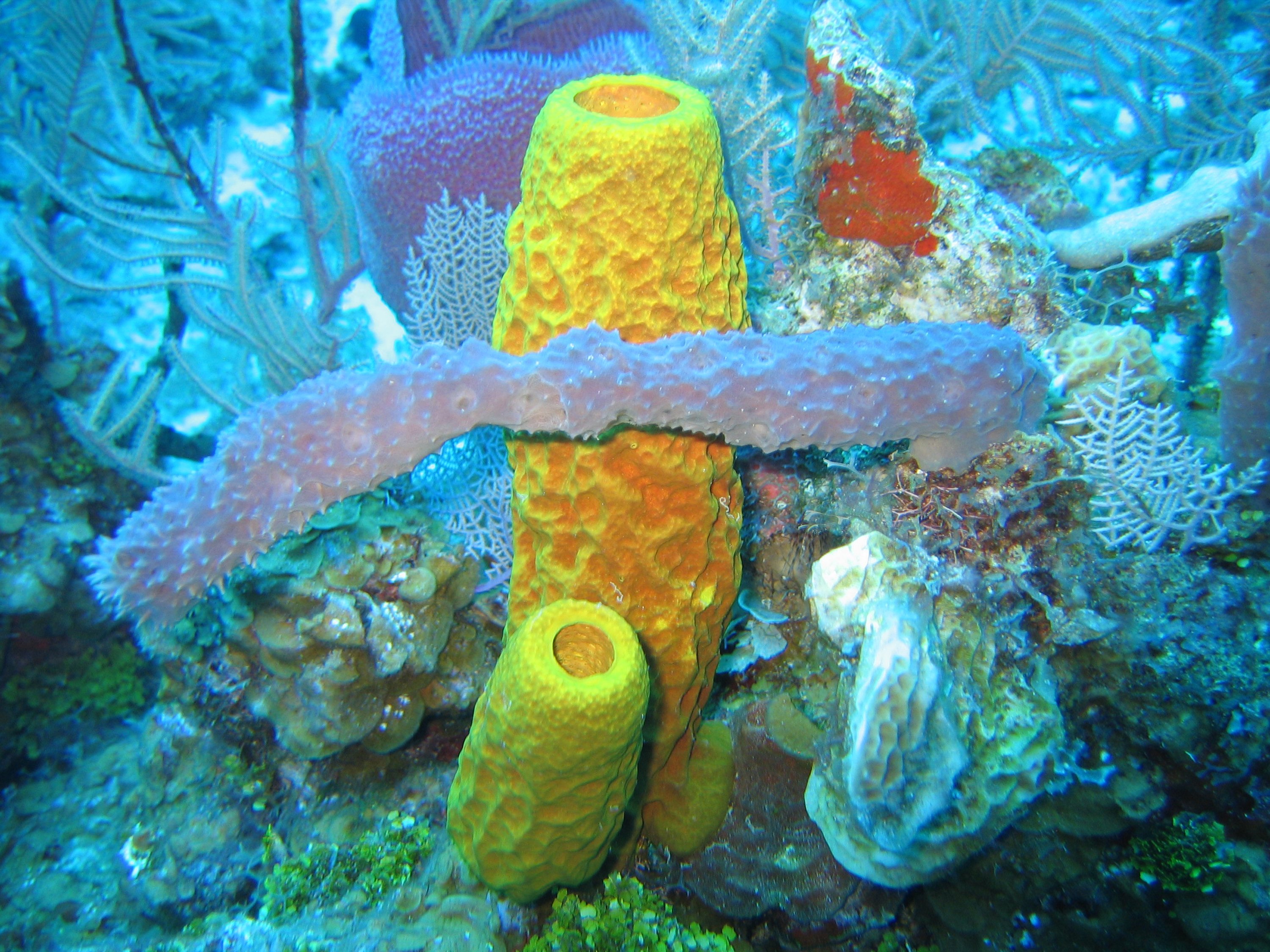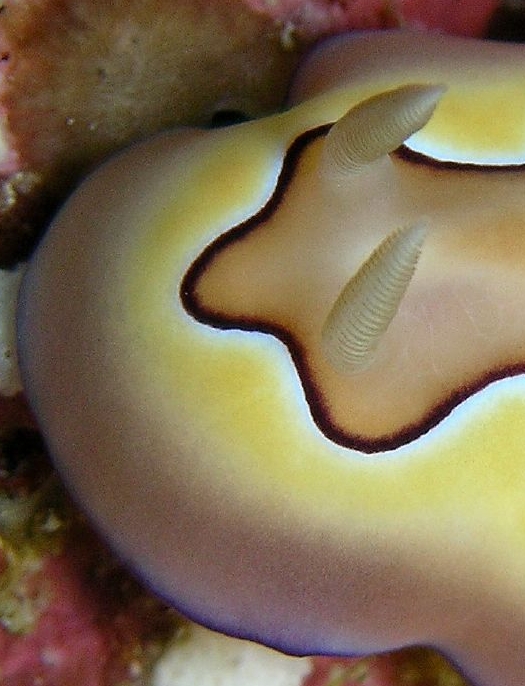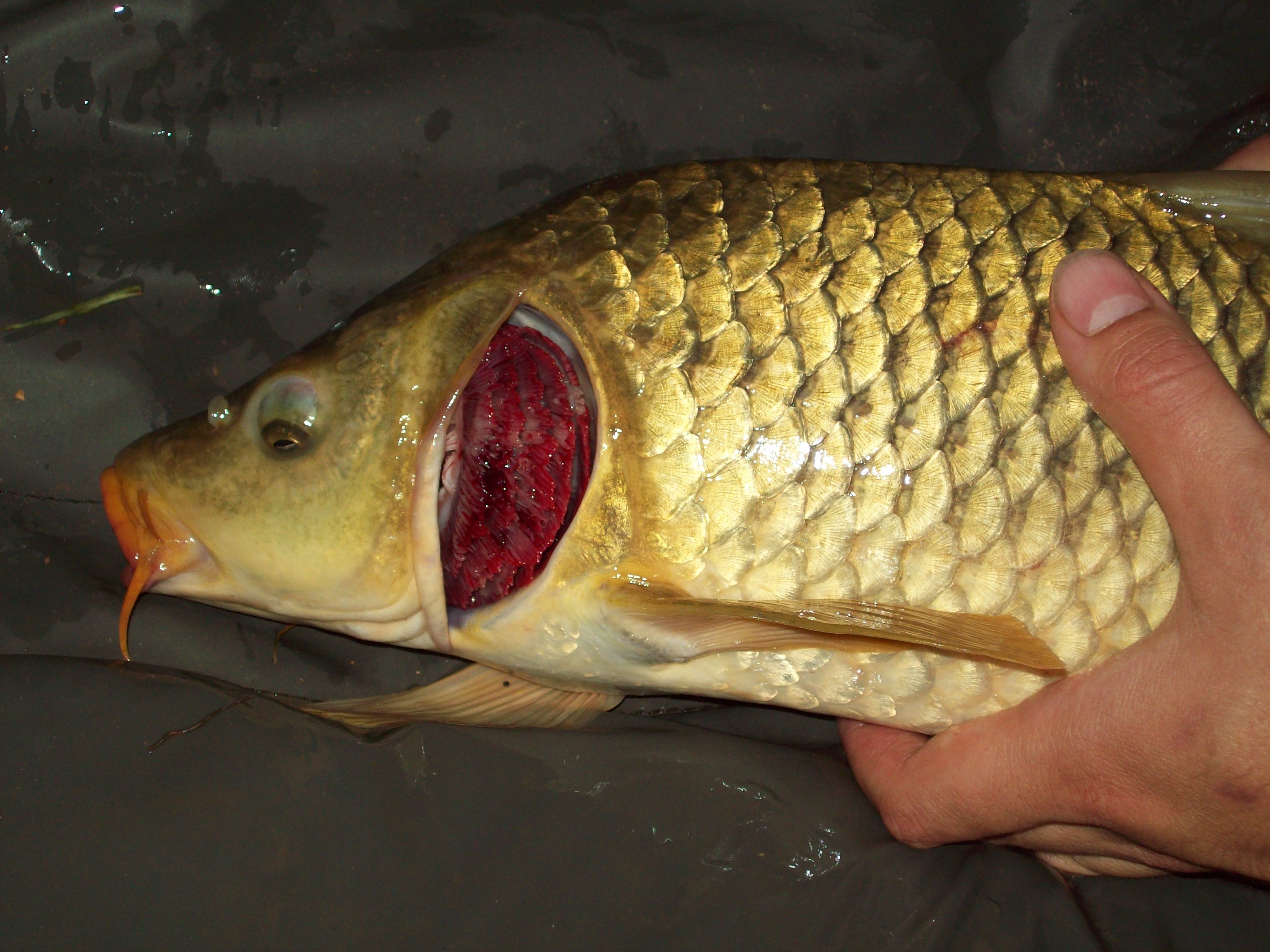|
Chromodoris Strigata
''Chromodoris strigata'', commonly known as the streaked chromodoris, is a species of colourful sea slug, a dorid nudibranch, a marine gastropod mollusc in the family Chromodorididae.Caballer, M. (2011)''Chromodoris strigata'' Rudman, 1982.Accessed through: World Register of Marine Species on 2011-01-13 Distribution This species occurs in the tropical Indo-West Pacific Ocean. It has been observed in localities as far apart as Madagascar in Africa to the Great Barrier Reef in Australia.Rudman, W.B., 1998 (November 19''Chromodoris strigata'' Rudman, 1982. n/nowiki> Sea Slug Forum. Australian Museum, Sydney. Description ''Chromodoris strigata'' is pale blue with black longitudinal lines on its body and upper mantle. It has a bright orange-edged mantle and bright orange gills and rhinophores. This species is easily confused with ''Chromodoris elisabethina'' but has a distinctive darker area in the middle of the back. Ecology This species, like many other nudibranchs, feeds on spo ... [...More Info...] [...Related Items...] OR: [Wikipedia] [Google] [Baidu] |
Species
In biology, a species is the basic unit of Taxonomy (biology), classification and a taxonomic rank of an organism, as well as a unit of biodiversity. A species is often defined as the largest group of organisms in which any two individuals of the appropriate sexes or mating types can reproduction, produce Fertility, fertile offspring, typically by sexual reproduction. Other ways of defining species include their karyotype, DNA sequence, morphology (biology), morphology, behaviour or ecological niche. In addition, paleontologists use the concept of the chronospecies since fossil reproduction cannot be examined. The most recent rigorous estimate for the total number of species of eukaryotes is between 8 and 8.7 million. However, only about 14% of these had been described by 2011. All species (except viruses) are given a binomial nomenclature, two-part name, a "binomial". The first part of a binomial is the genus to which the species belongs. The second part is called the specifi ... [...More Info...] [...Related Items...] OR: [Wikipedia] [Google] [Baidu] |
Africa
Africa is the world's second-largest and second-most populous continent, after Asia in both cases. At about 30.3 million km2 (11.7 million square miles) including adjacent islands, it covers 6% of Earth's total surface area and 20% of its land area.Sayre, April Pulley (1999), ''Africa'', Twenty-First Century Books. . With billion people as of , it accounts for about of the world's human population. Africa's population is the youngest amongst all the continents; the median age in 2012 was 19.7, when the worldwide median age was 30.4. Despite a wide range of natural resources, Africa is the least wealthy continent per capita and second-least wealthy by total wealth, behind Oceania. Scholars have attributed this to different factors including geography, climate, tribalism, Scramble for Africa, colonialism, the Cold War, neocolonialism, lack of democracy, and corruption. Despite this low concentration of wealth, recent economic expansion and the large and young ... [...More Info...] [...Related Items...] OR: [Wikipedia] [Google] [Baidu] |
Sponges
Sponges, the members of the phylum Porifera (; meaning 'pore bearer'), are a basal animal clade as a sister of the diploblasts. They are multicellular organisms that have bodies full of pores and channels allowing water to circulate through them, consisting of jelly-like mesohyl sandwiched between two thin layers of cells. Sponges have unspecialized cells that can transform into other types and that often migrate between the main cell layers and the mesohyl in the process. Sponges do not have nervous, digestive or circulatory systems. Instead, most rely on maintaining a constant water flow through their bodies to obtain food and oxygen and to remove wastes. Sponges were first to branch off the evolutionary tree from the last common ancestor of all animals, making them the sister group of all other animals. Etymology The term ''sponge'' derives from the Ancient Greek word ( 'sponge'). Overview Sponges are similar to other animals in that they are multicellula ... [...More Info...] [...Related Items...] OR: [Wikipedia] [Google] [Baidu] |
Chromodoris Elisabethina
''Chromodoris elisabethina'' is a species of very colourful sea slug, a dorid nudibranch, a marine gastropod mollusc in the family Chromodorididae. Distribution This species was described from Burias Island in the Philippines. It is found in the central area of the Indo-Pacific region from Malaysia, Indonesia, the Philippines and Queensland, Australia to the southern part of Japan.Bolland, R. (1999''Chromodoris elisabethina''Okinawa Slug Site. Description ''Chromodoris elisabethina'' can reach a maximum size of length. The body is elongate with a foot which is distinct from the upper body by a skirt like mantle partially hiding the foot. The branched gills and the rhinophores are orange to yellow and can be withdrawn into pockets under the skin in case of danger. The main background colour is bluish, the intensity of the latter varying from blue-grey to intense blue. The blue dorsal side has a median black line which may be broken in some individuals and usually some sho ... [...More Info...] [...Related Items...] OR: [Wikipedia] [Google] [Baidu] |
Rhinophores
A rhinophore is one of a pair of chemosensory club-shaped, rod-shaped or ear-like structures which are the most prominent part of the external head anatomy in sea slugs, marine gastropod opisthobranch mollusks such as the nudibranchs, sea hares (Aplysiomorpha), and sap-sucking sea slugs (Sacoglossa). Etymology The name relates to the rhinophore's function as an organ of "smell". ''Rhino-'' means nose from Ancient Greek ῥίς ''rhis'' and from its genitive ῥινός ''rhinos''. "Phore" means "to bear" from New Latin ''-phorus'' and from Greek -phoros (φορος) "bearing", a derivative of ''phérein'' (φέρειν). Function Rhinophores are scent or taste receptors, also known as chemosensory organs situated on the dorsal surface of the head. They are primarily used for distance chemoreception and rheoreception (response to water current). The "scents" detected by rhinophores are chemicals dissolved in the sea water. The fine structure and hairs of the rhinophore ... [...More Info...] [...Related Items...] OR: [Wikipedia] [Google] [Baidu] |
Gills
A gill () is a respiratory organ that many aquatic organisms use to extract dissolved oxygen from water and to excrete carbon dioxide. The gills of some species, such as hermit crabs, have adapted to allow respiration on land provided they are kept moist. The microscopic structure of a gill presents a large surface area to the external environment. Branchia (pl. branchiae) is the zoologists' name for gills (from Ancient Greek ). With the exception of some aquatic insects, the filaments and lamellae (folds) contain blood or coelomic fluid, from which gases are exchanged through the thin walls. The blood carries oxygen to other parts of the body. Carbon dioxide passes from the blood through the thin gill tissue into the water. Gills or gill-like organs, located in different parts of the body, are found in various groups of aquatic animals, including mollusks, crustaceans, insects, fish, and amphibians. Semiterrestrial marine animals such as crabs and mudskippers have gill chambe ... [...More Info...] [...Related Items...] OR: [Wikipedia] [Google] [Baidu] |
Australia
Australia, officially the Commonwealth of Australia, is a sovereign ''Sovereign'' is a title which can be applied to the highest leader in various categories. The word is borrowed from Old French , which is ultimately derived from the Latin , meaning 'above'. The roles of a sovereign vary from monarch, ruler or ... country comprising the mainland of the Australian continent, the island of Tasmania, and numerous smaller islands. With an area of , Australia is the largest country by area in Oceania and the world's sixth-largest country. Australia is the oldest, flattest, and driest inhabited continent, with the least fertile soils. It is a megadiverse country, and its size gives it a wide variety of landscapes and climates, with deserts in the centre, tropical Forests of Australia, rainforests in the north-east, and List of mountains in Australia, mountain ranges in the south-east. The ancestors of Aboriginal Australians began arriving from south east Asia approx ... [...More Info...] [...Related Items...] OR: [Wikipedia] [Google] [Baidu] |
Great Barrier Reef
The Great Barrier Reef is the world's largest coral reef system composed of over 2,900 individual reefs and 900 islands stretching for over over an area of approximately . The reef is located in the Coral Sea, off the coast of Queensland, Australia, separated from the coast by a channel 100 miles wide in places and over 200 feet deep. The Great Barrier Reef can be seen from outer space and is the world's biggest single structure made by living organisms. This reef structure is composed of and built by billions of tiny organisms, known as coral polyps. It supports a wide diversity of life and was selected as a World Heritage Site in 1981. CNN labelled it one of the seven natural wonders of the world in 1997. Australian World Heritage places included it in its list in 2007. The Queensland National Trust named it a state icon of Queensland in 2006. A large part of the reef is protected by the Great Barrier Reef Marine Park, which helps to limit the impact of human use, suc ... [...More Info...] [...Related Items...] OR: [Wikipedia] [Google] [Baidu] |
Madagascar
Madagascar (; mg, Madagasikara, ), officially the Republic of Madagascar ( mg, Repoblikan'i Madagasikara, links=no, ; french: République de Madagascar), is an island country in the Indian Ocean, approximately off the coast of East Africa across the Mozambique Channel. At Madagascar is the world's List of island countries, second-largest island country, after Indonesia. The nation is home to around 30 million inhabitants and consists of the island of Geography of Madagascar, Madagascar (the List of islands by area, fourth-largest island in the world), along with numerous smaller peripheral islands. Following the prehistoric breakup of the supercontinent Gondwana, Madagascar split from the Indian subcontinent around 90 million years ago, allowing native plants and animals to evolve in relative isolation. Consequently, Madagascar is a biodiversity hotspot; over 90% of wildlife of Madagascar, its wildlife is endemic. Human settlement of Madagascar occurred during or befo ... [...More Info...] [...Related Items...] OR: [Wikipedia] [Google] [Baidu] |
Sea Slug
Sea slug is a common name for some marine invertebrates with varying levels of resemblance to terrestrial slugs. Most creatures known as sea slugs are gastropods, i.e. they are sea snails (marine gastropod mollusks) that over evolutionary time have either completely lost their shells, or have seemingly lost their shells due to having a greatly reduced or internal shell. The name "sea slug" is most often applied to nudibranchs, as well as to a paraphyletic set of other marine gastropods without obvious shells. Sea slugs have an enormous variation in body shape, color, and size. Most are partially translucent. The often bright colors of reef-dwelling species implies that these animals are under constant threat of predators, but the color can serve as a warning to other animals of the sea slug's toxic stinging cells ( nematocysts) or offensive taste. Like all gastropods, they have small, razor-sharp teeth, called radulas. Most sea slugs have a pair of rhinophores—sens ... [...More Info...] [...Related Items...] OR: [Wikipedia] [Google] [Baidu] |
Indo-Pacific
The Indo-Pacific is a vast biogeographic region of Earth. In a narrow sense, sometimes known as the Indo-West Pacific or Indo-Pacific Asia, it comprises the tropical waters of the Indian Ocean, the western and central Pacific Ocean, and the seas connecting the two in the general area of Indonesia. It does not include the temperate and polar regions of the Indian and Pacific oceans, nor the Tropical Eastern Pacific, along the Pacific coast of the Americas, which is also a distinct marine realm. The term is especially useful in marine biology, ichthyology, and similar fields, since many marine habitats are continuously connected from Madagascar to Japan and Oceania, and a number of species occur over that range, but are not found in the Atlantic Ocean. The region has an exceptionally high species richness, with the world's highest species richness being found in at its heart in the Coral Triangle, and a remarkable gradient of decreasing species richness radiating outwa ... [...More Info...] [...Related Items...] OR: [Wikipedia] [Google] [Baidu] |
Chromodorididae
Chromodorididae, or chromodorids, are a taxonomic family of colourful, sea slugs; dorid nudibranchs, marine gastropod mollusks in the superfamily Doridoidea. “Chromodorid nudibranchs are among the most gorgeously coloured of all animals.” The over 360 described species are primarily found in tropical and subtropical waters, as members of coral reef communities, specifically associated with their sponge prey. The chromodorids are the most speciose family of opisthobranchs. They range in size from <10mm to over 30 cm, although most species are approximately 15–30 mm in size. Although, they have a worldwide distribution, most species are found in the region. A scientific paper published in 2007, found the most widespread chromodorid genera, ('' |





